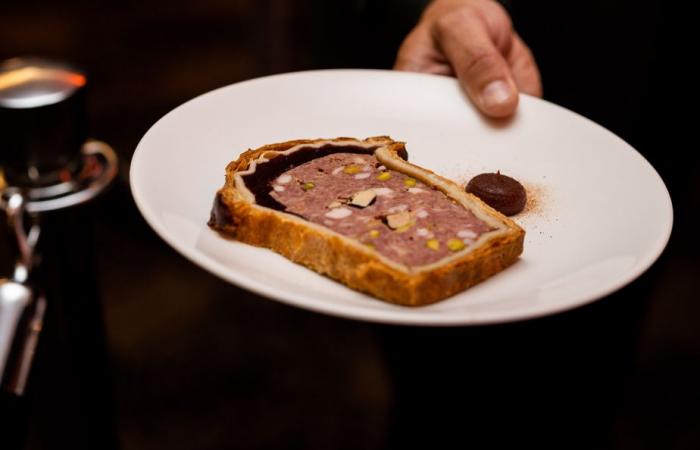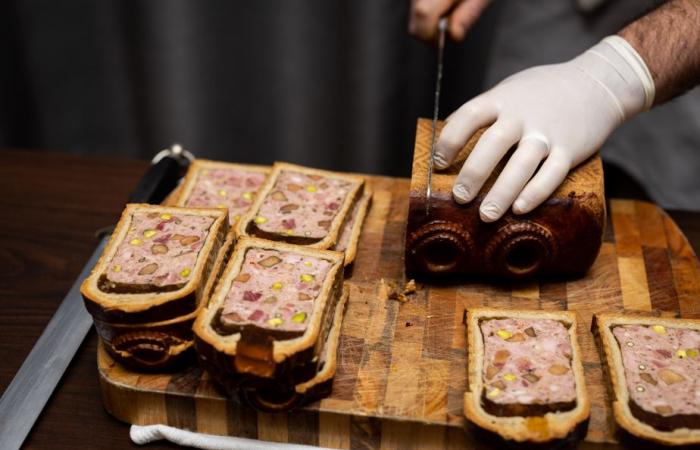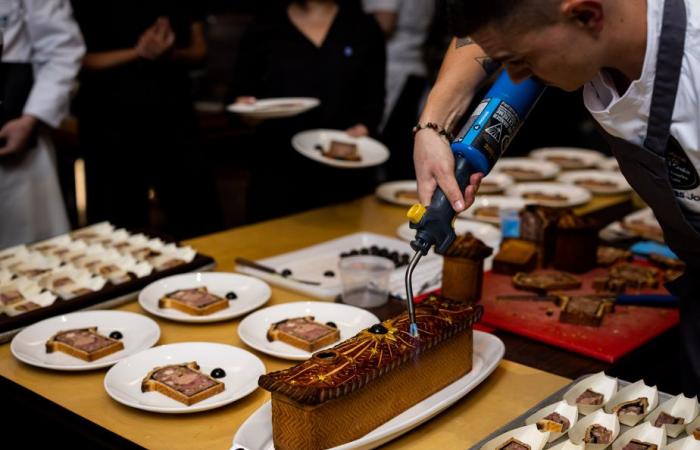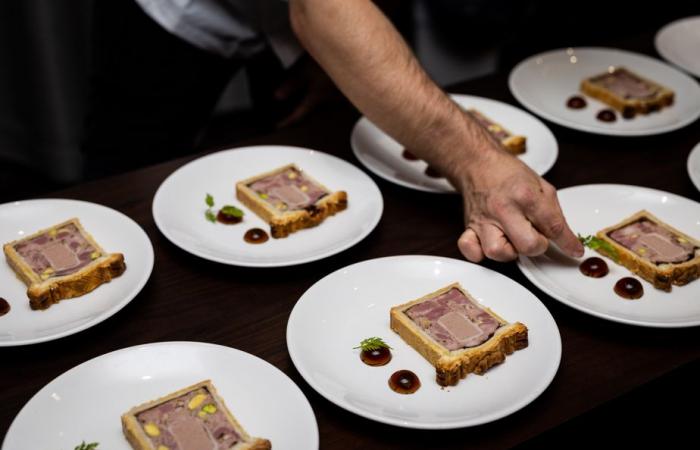The pâté-croute has come a long way. A classic French dish dating back several centuries, it has enjoyed a second lease of life since the inauguration of an annual global competition. Although it can be declined in many forms, chefs nevertheless agree on one point: it is a technical recipe that does not forgive mistakes. Thomas Joly and Grégory Faye, both involved in this international championship, show us the other side of the story.
Posted yesterday at 4:00 p.m.
From yesterday to today
Not only beautiful things happened in the Middle Ages in Europe, but at least it was the time of the invention of pâté en croute in France, which has become a traditional dish even today. Originally composed of meat and game, coated with a pastry layer to extend its preservation, it has experienced several vicissitudes over time, between refinement and regression, particularly in its industrial version.
In 2009, four chefs wanted to show the whole world that pâté-croute concocted according to the rules of the art is a real challenge and thus created an international championship which continues to this day. This year, the North American final was organized at the Nelligan Hotel in Montreal, bringing together Quebec, Canadian and American chefs. Won by Montrealer Thomas Joly, from Toledo, it was able to showcase all the talent required to bring an impeccable pâté out of the oven.
PHOTO SARAH MONGEAU-BIRKETT, LA PRESSE ARCHIVES
A pâté-crust
A dish with variable geometry
The modern pâté-croute can incorporate many ingredients. At its heart, we find a mixture of various meats, ranging from pork cubes to duck liver mousse, guinea fowl, pheasant, sweetbreads, lark! Everything can be garnished with pistachios, mushrooms, apples, figs, etc. A jelly, which can be flavored, holds everything together. Finally, flaky layers coat the pâté, which appears in the form of a large stylized loaf after baking, then cut into slices.
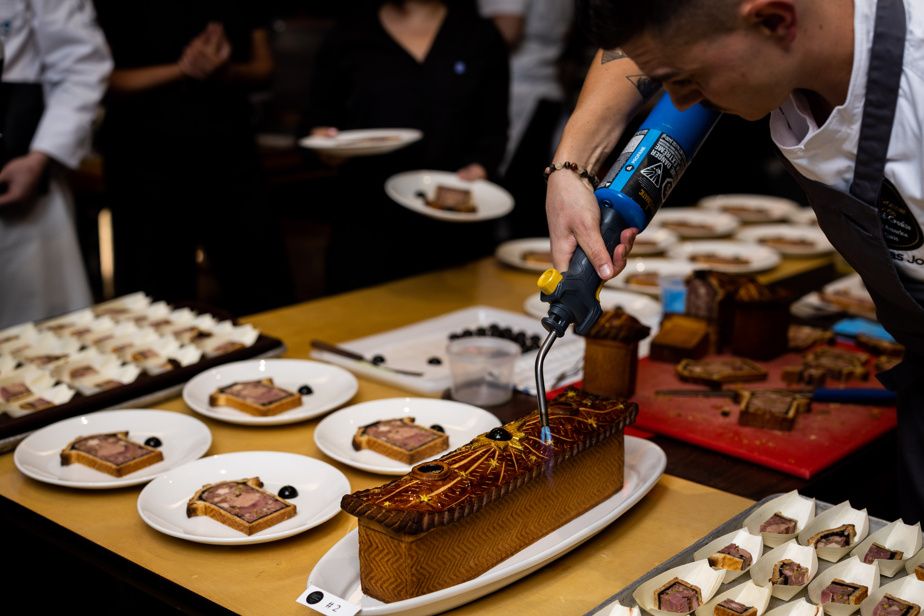
PHOTO SARAH MONGEAU-BIRKETT, LA PRESSE ARCHIVES
Thomas Joly finishing the details of his pâté-croute during the North American final of the world championship, in Montreal
Quite an art!
But why does this strange dish deserve so much attention? Subject to interpretation, it requires above all mastery of three disciplines, namely charcuterie, pastry and cooking. And perhaps a fourth: balancing, as its preparation is delicate.
“You can find recipes in all the books, but no one can say that they are capable of mastering a pâté-croute from A to Z! », Confides Thomas Joly, who will go to the final of the championship in Lyon at the beginning of December.
The goal is to get all the ingredients right, at each stage, whether in the marinades, in the cooking, in the seasonings, and to ensure that everything is harmonious.
Thomas Joly, chef
For Grégory Faye, catering director for the Deloitte tower and seasoned pâté-croute chef, the exercise creates emulation in the gastronomic world. “It’s like Formula 1: we try to have the best tires, the best aerodynamics, the best engine. That’s a lot of research and development! », illustrates the one who won the competition’s elegance prize in 2021.
A few acres of traps
What would be the keys to, technically, hope to obtain the best possible result? “The first thing would be to make a dough that is both tasty and crispy,” explains Mr. Joly. It is a technical challenge, because a lot of parameters come into play. Secondly, you have to make a stuffing that is neither too fatty nor too dry, with a texture and flavors, with delicacy but a certain rightness in the execution. »
But traps await the cook at every stage, and he must remain constantly vigilant.
“All the details are important: cooking times, marinades,” warns Mr. Faye. Particular attention could be paid to the resting time for the dough, which must be at least a day, otherwise it will have too much elasticity. It is absolutely necessary to weld the pâté correctly, sticking one dough well to the other, and leaving it to rest for at least six hours, or even a full day, otherwise the whole thing will burst when cooked. »
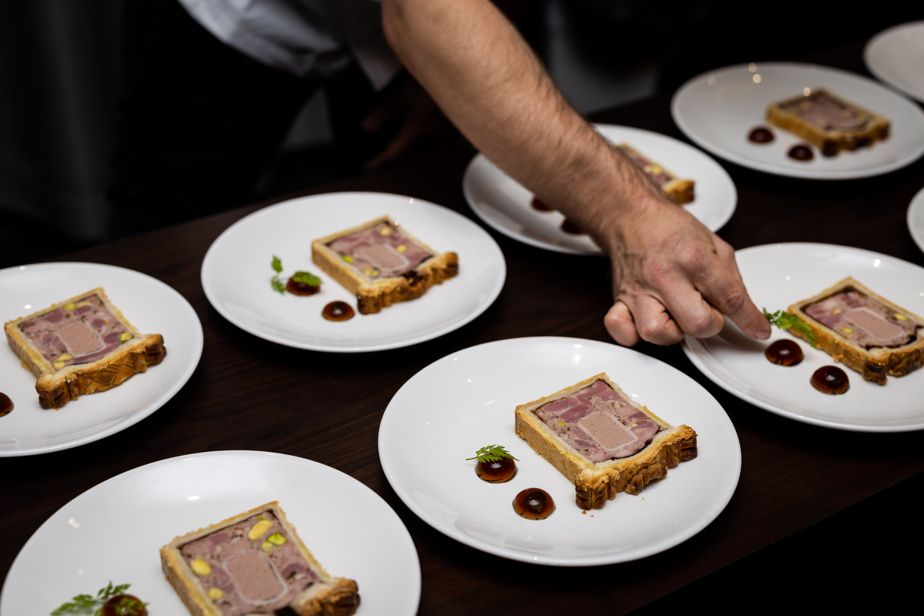
PHOTO SARAH MONGEAU-BIRKETT, THE PRESS
The secret ingredients of pâté-croute remain patience and perseverance.
Patience and perseverance
The secret ingredients remain patience and perseverance. Especially since the preparation takes a long time, like for a Christmas turkey or a cipaille. “I make four or five a week for the store, I try to modify the recipe here and there, and we sometimes encounter failures,” notes Thomas Joly. The key word is perseverance, putting in time, patience, energy. Fix what went wrong and don’t leave it as a failure. »
Same speech from Grégory Faye, and this is why he presented, on the blog La petite bette, a basic recipe with which the curious neophyte could start. “It’s a dish where you make a lot of mistakes, you shouldn’t be discouraged!” »
Check out the recipe on the La petite bette blog

